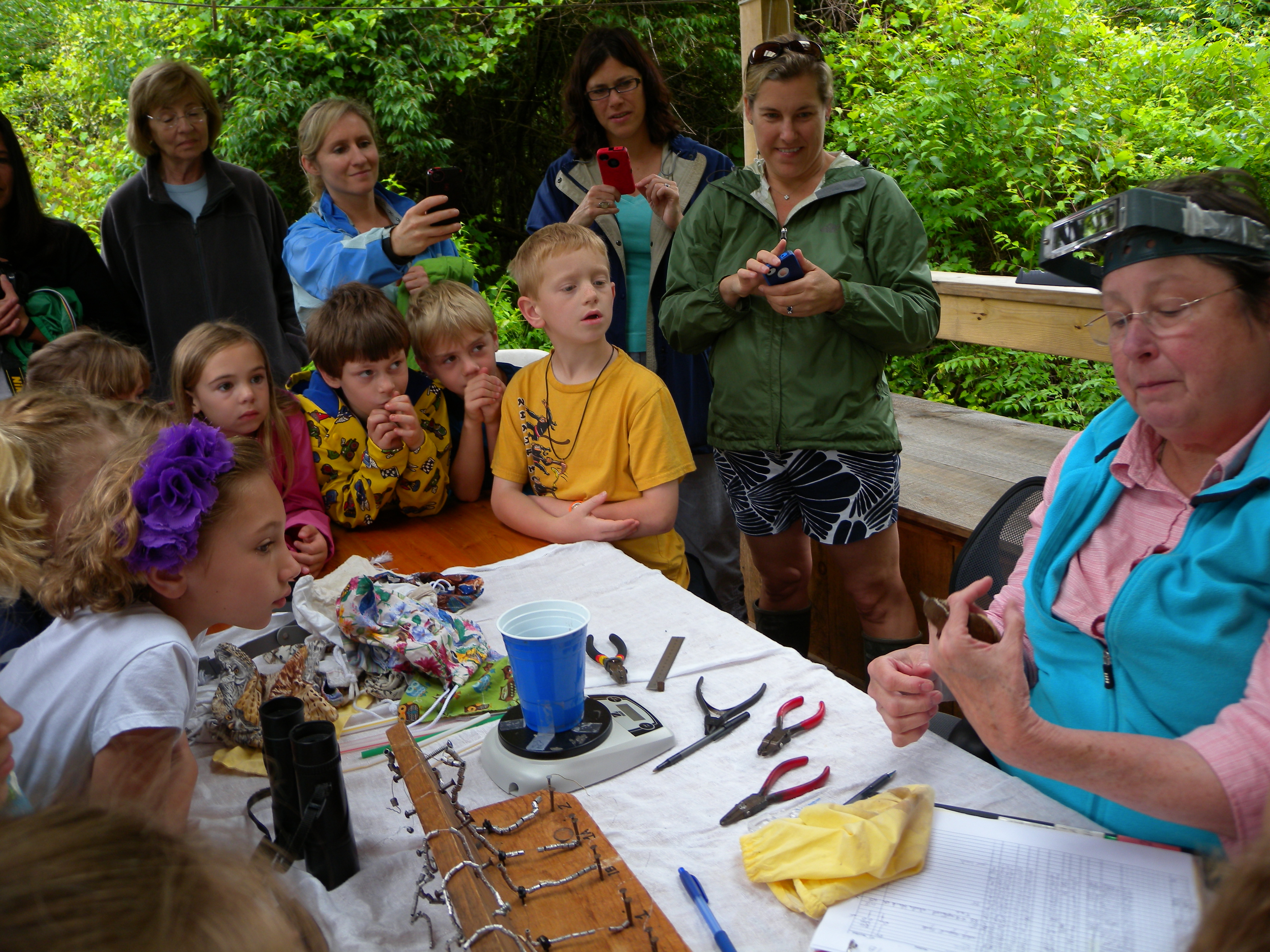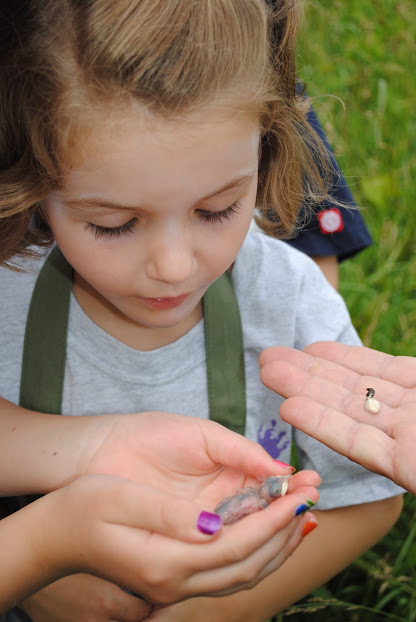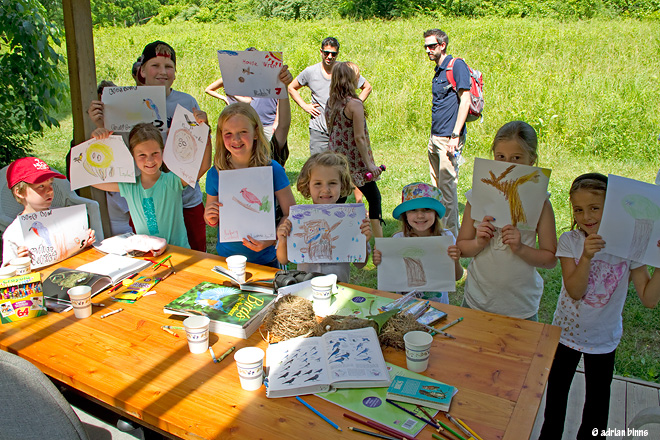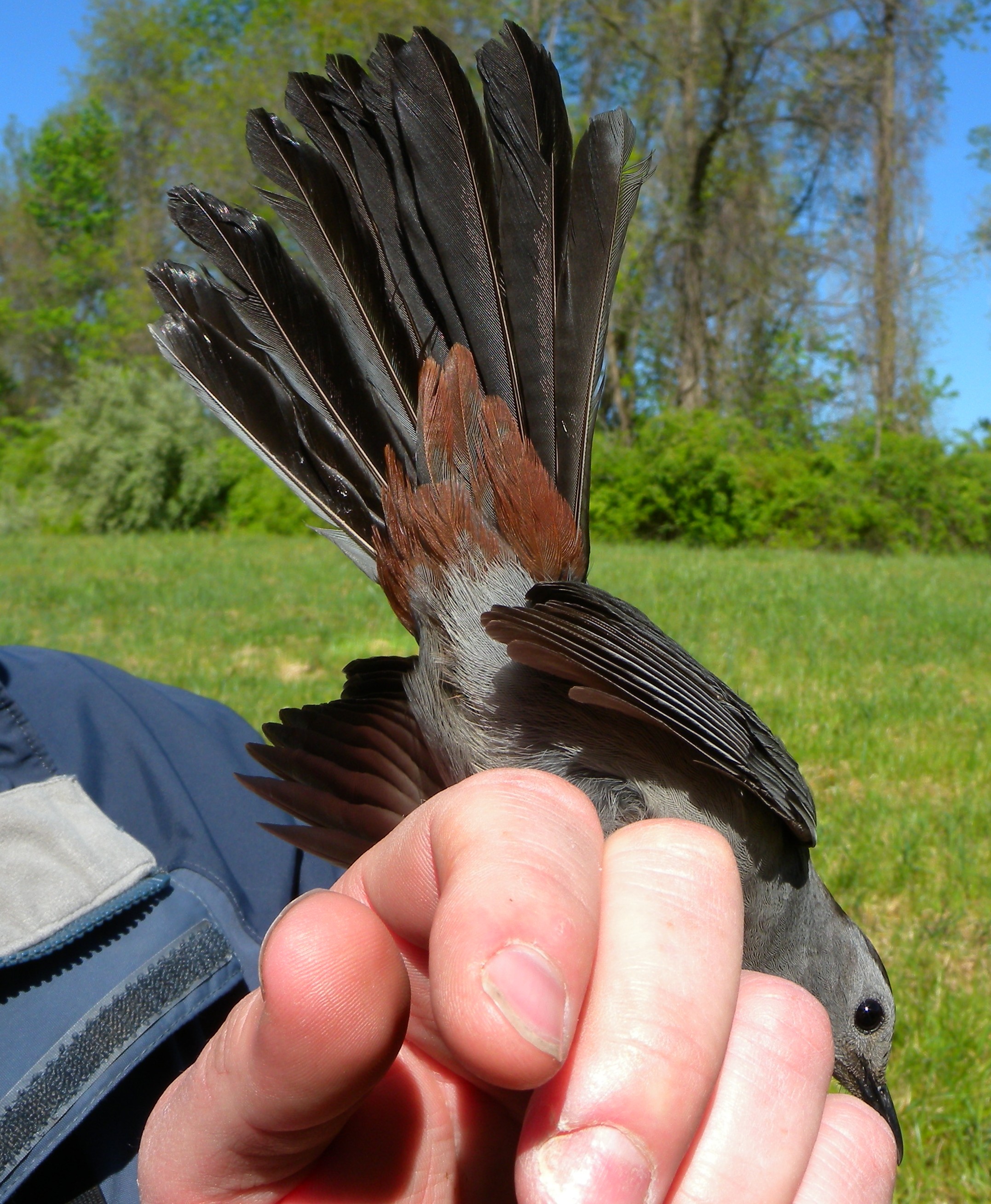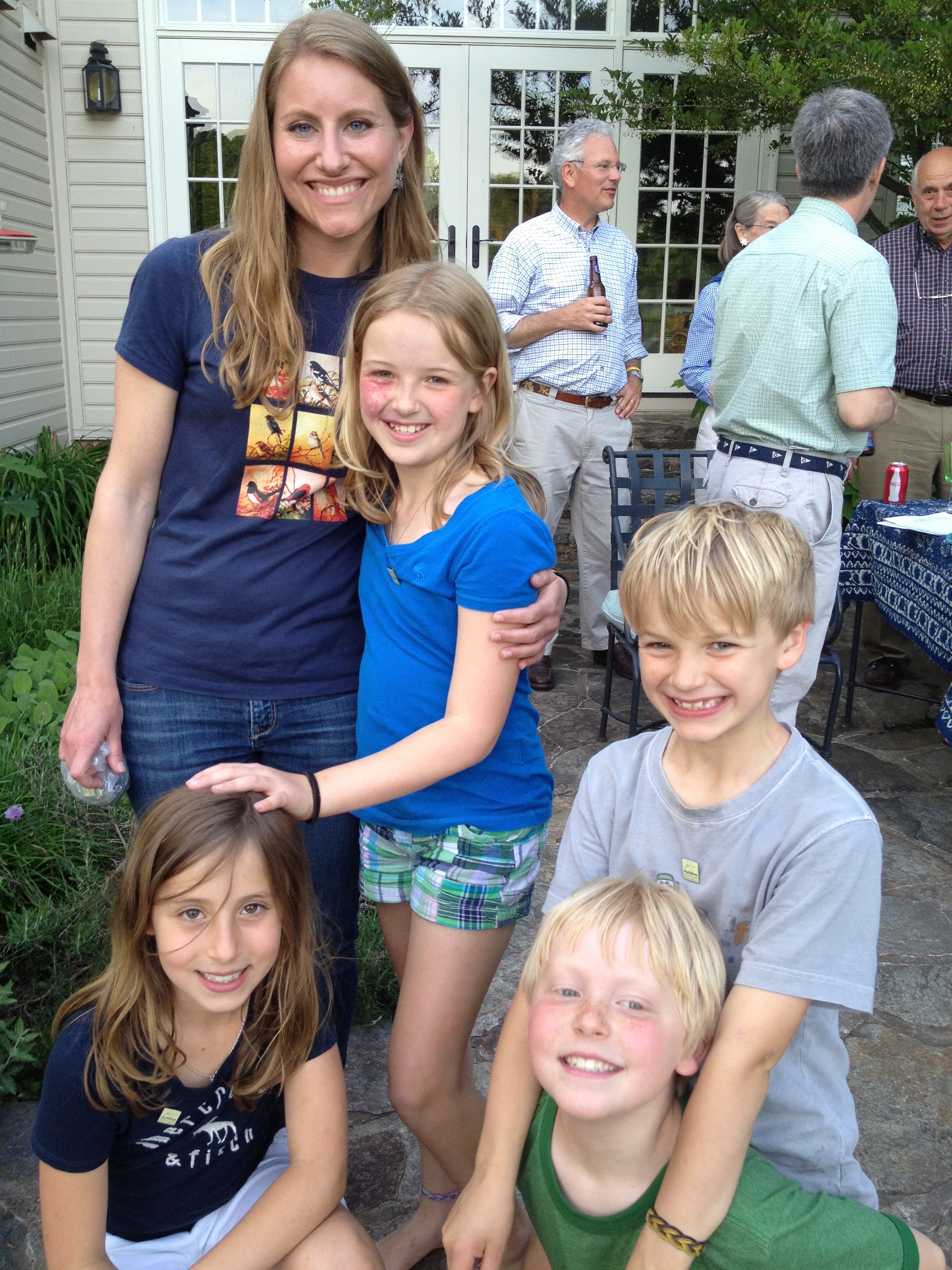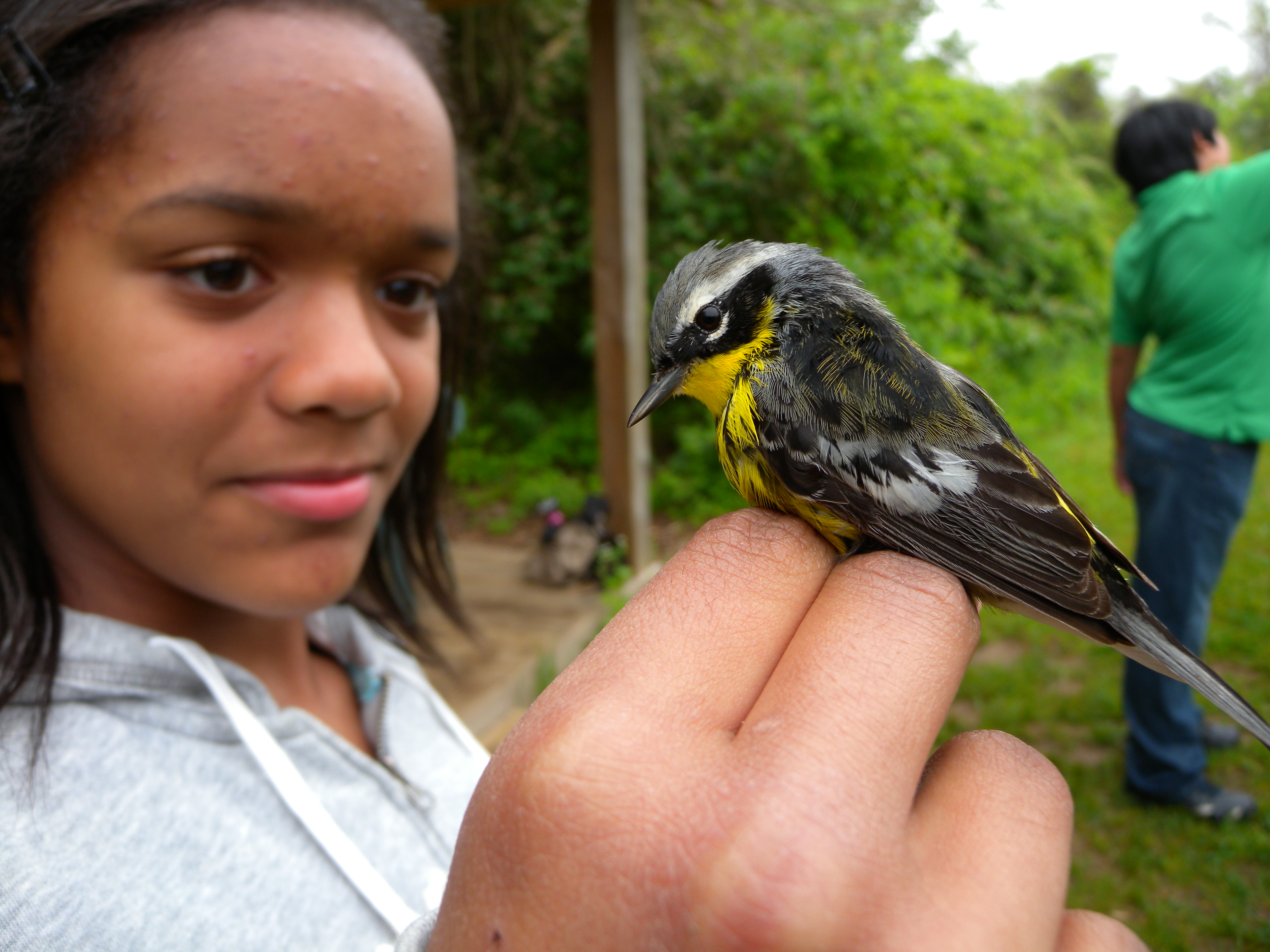Ever since we heard a Kentucky Warbler singing in the woods, we were hoping that one would fly into the net. Its song was taunting us, and we could often be caught coaxing it to fly our direction. Finally, on the last net run of the day, a Kentucky Warbler thrilled us with his arrival. It’s a historic moment for Rushton because this is the first time we have banded a Kentucky Warbler! One of the most striking features of the Kentucky Warbler is its face mask, a black and olive green color. The olive green color and the bright yellow of his belly were simply gorgeous to see up close. His exotic colors and the rarity of event of seeing a Kentucky Warbler rather than just hearing his song made his visit truly remarkable. This one knows how to pose for the camera!

Part of the reason why his appearance is so notable and exciting is because the Kentucky Warbler’s presence in the Rushton woods, along with other threatened species such as the Scarlet Tanager and the Wood Thrush, is part of what makes it an IBA (Important Bird Area). The Kentucky Warbler relies upon bottomland hardwood forest for nesting. This specific nesting requirement makes the Kentucky Warbler an important reason to conserve these habitats in Pennsylvania. Kentucky Warblers winter in the southern part of the United States and outside the United States. You can see where they have been sighted on this map.
Why is it called the Kentucky Warbler? The Kentucky Warbler is named for the state where it was first sited in 1811! Another interesting fact about the Kentucky Warbler that the Cornell Lab of Ornithology shares is that the male will sing the same song type and only change pitch to match a competitor, while other song birds will change their song type.

The Kentucky Warbler certainly stole the show, but we also had some other species return to us this week, along with some new captures for this season.


The Carolina Wren is quite romantic, as it mates for life! It was on this bird that we noticed the Uropygial Gland, a gland that birds use for preening. They will rub their beaks against the gland and spread the oil over their feathers!

~ Guest Blogger, Natalie Staples






